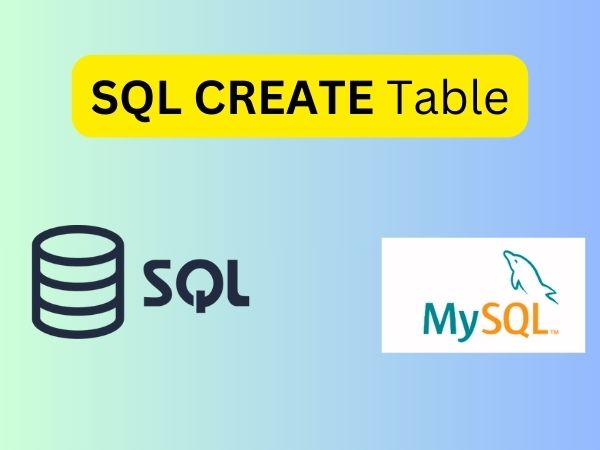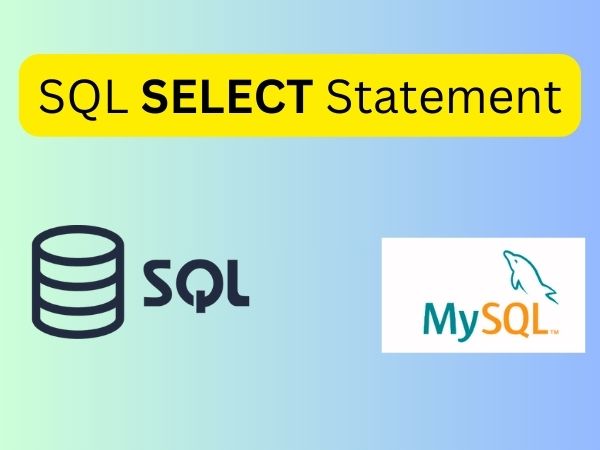SQL vs. PL/SQL: Structured Query Language (SQL) is a standard Database language that is used to create, maintain and retrieve the relational database.
PL/SQL is a block-structured language that enables developers to combine the power of SQL with procedural statements.
Project Scenario: Online Retail Order Processing System
The Goal: Develop a backend system for an e-commerce website that handles customer orders, manages product inventory, and processes payments.
Why PL/SQL is Crucial Here: Many critical operations involve multiple steps, conditional logic, error handling, and direct interaction with the database in a transactional manner. This is where SQL alone falls short, and PL/SQL shines.
Example PL/SQL Components in the Project
Here are specific examples of how PL/SQL would be used:
1. Stored Procedure: PLACE_ORDER
This is a core component. When a customer clicks “Place Order” on the website, the application calls this PL/SQL procedure.
SQL
-- Example of a simplified PL/SQL Stored Procedure
CREATE OR REPLACE PROCEDURE PLACE_ORDER (
p_customer_id IN NUMBER,
p_cart_items IN SYS.ODCINUMBERLIST, -- An array/list of product IDs
p_quantities IN SYS.ODCINUMBERLIST, -- An array/list of quantities
p_payment_method IN VARCHAR2,
x_order_id OUT NUMBER,
x_status_message OUT VARCHAR2
)
AS
v_total_amount DECIMAL(10, 2) := 0;
v_product_price DECIMAL(10, 2);
v_current_stock NUMBER;
v_new_order_id NUMBER;
v_item_index NUMBER;
-- Custom exception for insufficient stock
INSUFFICIENT_STOCK EXCEPTION;
PRAGMA EXCEPTION_INIT(INSUFFICIENT_STOCK, -20001); -- Assign a custom error number
BEGIN
-- Start a transaction for atomicity
SAVEPOINT StartOrderPlacement;
-- 1. Insert new order record
SELECT NVL(MAX(OrderID), 0) + 1 INTO v_new_order_id FROM Orders;
INSERT INTO Orders (OrderID, CustomerID, OrderDate, TotalAmount, PaymentMethod)
VALUES (v_new_order_id, p_customer_id, SYSDATE, 0, p_payment_method); -- TotalAmount will be updated later
-- 2. Loop through cart items to add to OrderDetails and update stock
v_item_index := p_cart_items.FIRST;
WHILE v_item_index IS NOT NULL LOOP
SELECT UnitPrice, CurrentStock INTO v_product_price, v_current_stock FROM Products
WHERE ProductID = p_cart_items(v_item_index) FOR UPDATE; -- Lock row for update
IF v_current_stock < p_quantities(v_item_index) THEN
RAISE INSUFFICIENT_STOCK; -- Raise our custom exception
END IF;
-- Insert into OrderDetails
INSERT INTO OrderDetails (OrderID, ProductID, Quantity, UnitPrice)
VALUES (v_new_order_id, p_cart_items(v_item_index), p_quantities(v_item_index), v_product_price);
-- Update product stock
UPDATE Products
SET CurrentStock = CurrentStock - p_quantities(v_item_index)
WHERE ProductID = p_cart_items(v_item_index);
v_total_amount := v_total_amount + (v_product_price * p_quantities(v_item_index));
v_item_index := p_cart_items.NEXT(v_item_index);
END LOOP;
-- 3. Update the total amount for the new order
UPDATE Orders
SET TotalAmount = v_total_amount
WHERE OrderID = v_new_order_id;
-- 4. Commit the transaction if all successful
COMMIT;
x_order_id := v_new_order_id;
x_status_message := 'Order placed successfully!';
EXCEPTION
WHEN INSUFFICIENT_STOCK THEN
ROLLBACK TO StartOrderPlacement; -- Rollback only this transaction
x_order_id := NULL;
x_status_message := 'Error: Insufficient stock for one or more items. Order cancelled.';
WHEN OTHERS THEN
ROLLBACK; -- Rollback the entire transaction
x_order_id := NULL;
x_status_message := 'Error: An unexpected error occurred during order placement: ' || SQLERRM;
-- Log the error for debugging purposes
INSERT INTO ErrorLog (ErrorDate, ErrorMessage) VALUES (SYSDATE, SQLERRM);
COMMIT; -- Commit the error log entry (if desired, depends on logging strategy)
END PLACE_ORDER;
/
Why this is a strong PL/SQL use case:
- Transaction Management: The entire order placement process (inserting order, inserting order details, updating stock) must be an atomic transaction. If any step fails, the entire operation must be rolled back. PL/SQL’s
COMMITandROLLBACK(andSAVEPOINT) handle this perfectly. - Procedural Logic: It involves looping through items, checking stock levels before attempting updates, and calculating a total amount.
- Error Handling: It explicitly checks for insufficient stock and handles it gracefully with a custom exception. It also has a general
WHEN OTHERSblock to catch unexpected database errors, log them, and inform the user. - Data Validation: Basic stock validation is performed before updates.
- Performance: All the SQL statements are executed within a single block on the server, minimizing network round trips compared to sending each SQL statement individually from the application.
2. Database Trigger: UPDATE_PRODUCT_LAST_ORDER_DATE
This trigger automatically updates a LastOrderDate column in the Products table whenever a product is included in a new order.
SQL
-- Assuming `Products` table has a `LastOrderDate` column
ALTER TABLE Products ADD LastOrderDate DATE;
CREATE OR REPLACE TRIGGER TRG_UPDATE_PRODUCT_LAST_ORDER_DATE
AFTER INSERT ON OrderDetails
FOR EACH ROW
BEGIN
-- Update the Products table with the most recent order date for the product
UPDATE Products
SET LastOrderDate = SYSDATE -- Or join with Orders to get the actual OrderDate of the new order
WHERE ProductID = :NEW.ProductID;
END;
/
Why a Trigger?
- Automation: This ensures that the
LastOrderDateis always up-to-date without the application needing to explicitly manage it. It’s an automated business rule. - Data Consistency: Helps maintain data integrity across related tables.
3. Function: GET_CUSTOMER_TOTAL_SPEND
A function to retrieve a calculated value.
SQL
CREATE OR REPLACE FUNCTION GET_CUSTOMER_TOTAL_SPEND (
p_customer_id IN NUMBER
)
RETURN DECIMAL
IS
v_total_spend DECIMAL(10, 2);
BEGIN
SELECT NVL(SUM(TotalAmount), 0)
INTO v_total_spend
FROM Orders
WHERE CustomerID = p_customer_id;
RETURN v_total_spend;
END GET_CUSTOMER_TOTAL_SPEND;
/
Why a Function?
- Reusability: This function can be called from various places – reporting tools, other PL/SQL procedures, or even directly from a SQL
SELECTstatement (SELECT CustomerName, GET_CUSTOMER_TOTAL_SPEND(CustomerID) FROM Customers;). - Encapsulation: The logic for calculating total spend is centralized and hidden.
4. Package: INVENTORY_MGMT_PKG
To organize related inventory management procedures and functions.
SQL
CREATE OR REPLACE PACKAGE INVENTORY_MGMT_PKG AS
-- Procedure to replenish stock for a product
PROCEDURE REPLENISH_STOCK (
p_product_id IN NUMBER,
p_quantity IN NUMBER,
x_status OUT VARCHAR2
);
-- Function to check current stock level
FUNCTION GET_STOCK_LEVEL (
p_product_id IN NUMBER
) RETURN NUMBER;
END INVENTORY_MGMT_PKG;
/
CREATE OR REPLACE PACKAGE BODY INVENTORY_MGMT_PKG AS
PROCEDURE REPLENISH_STOCK (
p_product_id IN NUMBER,
p_quantity IN NUMBER,
x_status OUT VARCHAR2
)
IS
BEGIN
UPDATE Products
SET CurrentStock = CurrentStock + p_quantity
WHERE ProductID = p_product_id;
IF SQL%ROWCOUNT > 0 THEN
x_status := 'Stock replenished successfully.';
COMMIT;
ELSE
x_status := 'Product ID not found.';
ROLLBACK;
END IF;
EXCEPTION
WHEN OTHERS THEN
x_status := 'Error replenishing stock: ' || SQLERRM;
ROLLBACK;
END REPLENISH_STOCK;
FUNCTION GET_STOCK_LEVEL (
p_product_id IN NUMBER
) RETURN NUMBER
IS
v_stock NUMBER;
BEGIN
SELECT CurrentStock INTO v_stock
FROM Products
WHERE ProductID = p_product_id;
RETURN v_stock;
EXCEPTION
WHEN NO_DATA_FOUND THEN
RETURN NULL; -- Or raise an application-specific error
END GET_STOCK_LEVEL;
END INVENTORY_MGMT_PKG;
/
Why a Package?
- Organization: Groups related inventory functionalities (
REPLENISH_STOCK,GET_STOCK_LEVEL) into a single logical unit. - Encapsulation and Security: The package specification (header) defines what’s publicly accessible, while the package body contains the implementation details, promoting information hiding.
- Dependency Management: Reduces dependencies between different parts of the application.

